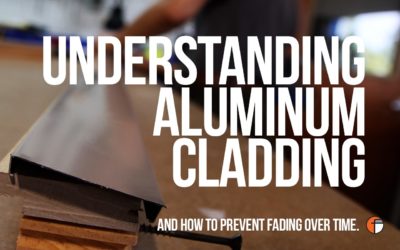Homeowners often show some apprehension in taking on window sash assembly. In a perfect world, we would love nothing more than to provide complete replacement windows. The fact of the matter is, when many window companies went out of business, they took their parts and their manufacturers with them. Several components that went into the original window construction simply are not available for purchase or production.
Without any experience, sash assembly can be a complicated process the first time you try it. Unfortunately, many homeowners succumb to their fears and end up spending tons more money on replacement windows they don’t need, or substitute products that don’t match their original windows. We always recommend a professional for better results, but if you have a little mechanical savvy and a DIY spirit, here are a few tips to turn a Fenster wood sash frame into a finished window.
1. Disconnect the old sash from the operating hardware, hinges, or balance track and lay flat on a sturdy work surface. See our post on window sash removal if you need tips on removing the sash.
2. Boot glazed sash frames screw together at the corner joints, either from the edge or the inside face. Locate those corner screws and remove them. If you do not have a boot glaze style sash, see our post on wet glazed sash assembly.
3. Separate each of the four sides from the rubber gasket. Leave the rubber gasket on the glass. This would be a good time to remove mildew or paint. You can soak the gasket in very hot water and detergent to soften it if you choose.
4. Most cladding simply slides over the face of the wood frame and can be removed. The actual design is specific to each brand or style of window, but in general, most cladding has a fold at one end. One notable exception could be a small staple at one or both ends. Using a putty knife, gently pry up one end fold so that it is flush with the face surface. Slide the cladding off the other end. On some sash, there may be a small dab of adhesive under one end of the cladding. Gently work the cladding free from this adhesive with a thin instrument before sliding the cladding off.
5. Repeat step 4 for all stile and rail pieces.
6. If you haven’t done so, on bare, stain-grade profiles, we recommend priming the exterior surface prior to applying the cladding.
7. Take each corresponding cladding piece and slide it back on the new Fenster matching stile or rail.
8. Using a small hammer or similar tool, gently tap the fold back down.
9. With all four sides complete, work each side back on the glazing gasket and apply caulk to each corner joint.
10. Pull the frame corners tight if necessary and screw them together with the provided screws. Clean off any excess sealant.
11. Using the old stiles and rails as a template, lay the corresponding part next to the new frame and transfer the screw hole locations for the hardware. Pre-drill for the screws and reinstall the hardware.
12. Re-install the sash in the frame opening.
We highly recommend sealing all edges of the sash frame prior to final installation, especially stationary casement sashes that have unexposed edges. Exception: do not paint the guide track groove on double-hung sashes as this will cause the sash to stick to the vinyl balance track.
Ready to get started? Great! Check out our featured product line and gather all the details you need about ordering a replacement window for your home here. Then contact us today!




We are homeowners of a house completed in 1998 and have found that our double hung vinyl clad double glass pane windows are Malta. One lower sash has rotted out at the bottom of the lower sash and we have been trying to identify exactly what we should order to have used for reframing the lower sash with the existing glass. Unsure of whether boot glazed OR WET.?? Our good windows have a cushioned (about 1/4 to 1/2 inch cushion in the bottom part of the frame and a dark edging holding in the glass part all around 4 sides inside and outside. The rotten window bottom frame part falls way from the glass. The only screws visible are at the ends of the top art of the frame. The frame is 1 1/2″ thick-34″wide and 28″ top to bottom. Is that enough information to determine what it is that we need to order? This is for a summer home near Rosman, NC but we are not at that location until possibly next April. The address given was fro our home in FL. Any help would be greatly appreciated. Thank you.
Raymond, I would say they are boot. Malta windows are challenging to repair. I highly recommend professional assistance with these. Thank you for the information, however we can not track quote requests over our blog. Please complete a quote request form on our website and we’ll be happy to help.
Where can I buy rubber boot glaze gaskets. I have all wood caradco double hung windows in my home that was biuld in 1986. I’m going to replace the IGU’s double pain glass units in all my windows. Took the IGU out of the first window to measure them up for replacement. Both of them measured 28″ x 20 5/8″ x 7/16″. These two rubber boot glaze gaskets look reusable but I have twelve more windows to go. In case I need any new ones are there any suppliers around who sell boot glaze rubber gaskets ?
Thank you
Steve
Steve, Those are no longer being produced. We could make a fortune selling those if we could get a rubber extruder to make them. We’ve had to convert all of our replica boot sashes to wet glazed to overcome the lack of replacement boots.
Ryan,
Then when reusing the rubber boot glaze gaskets may i have any instulation tips. Do I dry fit it over the IGU and I nto the sash, like the factory did, or also add some sort of sealant. If a sealant is to be used on the gasket, such as a natural cure silicone, what kind and where exactly would be the best places to apply the sealant?
Thank you
Steve
Steve, There was no sealant originally why it was a bad design. Any sealant you use may cause an issue down the road. One, it will make it difficult to re-use the boot again if the glass fails. Two, I tend to shy away from caulking the boot shut as it may trap water and cause it to well up and run inside the window or potentially into the wall cavity. If either of those are of no concern, caulking the boot to the glass and to the cladding will certainly cut down on water penetration.